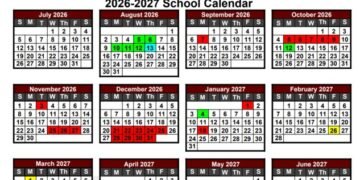Courtesy of Kentucky Lantern
Kentucky’s state budget director told lawmakers Wednesday that fiscal thresholds established by the GOP-dominated legislature before the state income tax can be lowered have been met at the end of this fiscal year.
That means Kentucky lawmakers are likely to vote to reduce the state’s income tax rate by another half-percentage point to 3.5% during the 2025 legislative session, which would then go into effect at the start of 2026. That anticipated income tax cut is a part of a series of pending income tax cuts of a half percent set in motion by landmark tax legislation passed by state lawmakers in 2022.
Kentucky Senate Appropriations and Revenue Committee Chair Chris McDaniel told the Lantern that lawmakers have “worked diligently” toward hitting the fiscal triggers to lower the income tax.
“The receipts were great last year and the spending was restrained, which is the combo that we were looking for back in the day when we wanted to go with this trigger scenario,” McDaniel said.
Democrats and a coalition of advocacy groups have previously pushed against Republican-led efforts to lower the state’s income tax eventually to zero, a goal backed by the Kentucky Chamber of Commerce. But Republican legislative leadership told the Lexington Herald-Leader earlier this summer the state’s income tax rate may not reach lower than 3%. Kentucky House Speaker David Osborne, R-Prospect, told the newspaper in May the state could have to significantly restructure taxes — such as by raising the sales tax — to go lower than a 3% rate.
One of the two fiscal triggers to lower the income tax rate was not met at the end of the previous fiscal year, meaning the legislature could not lower the income tax rate during this year’s regular session. At that time, McDaniel said a “successful implementation of policy” had balanced a desire to lower the income tax with recognizing the need to fund government services.
The two fiscal triggers established by the legislature to lower the income tax rate are based on revenue going into the Budget Reserve Trust Fund, known as the “rainy day” fund, and revenue going into General Fund revenues:
- The rainy day fund balance must be at least 10% of what total General Fund receipts were in the fiscal year that just ended.
- Total General Fund receipts for the year just ended must have exceeded General Fund spending by at least the amount that it would cost to cut the income tax rate by one full percentage point.
In this year’s legislative session, researchers with the left-leaning think tank Kentucky Center for Economic Policy said state lawmakers moved the goalposts of the landmark tax law establishing the income tax cut triggers, thereby making it easier for the income tax rate to be lowered. These researchers say lawmakers did so by making sure billions of dollars in spending from the Budget Reserve Trust Fund didn’t count toward General Fund receipts that could have blocked another income tax cut.
Jason Bailey, executive director of KCEP, told the Lantern on Wednesday that while he appreciates hearing Republican leadership potentially reconsidering eliminating the income tax, any income tax cut is concerning because of its significance as a revenue source. If the relatively strong economy turns south, he said, that could potentially mean budget problems with a reduced income tax to rely on.
“Each time they cut a [percentage] point, it raises questions about, ‘How are we going to pay for that?’” Bailey said. “In addition to the economy being strong overall, the national economy and still seeing the pandemic spending flow through … some other unique characteristics … led to a lot of revenue this year, but doesn’t necessarily mean moving forward (revenue) will continue to be as strong.”
McDaniel said funding used from the Budget Reserve Trust Fund was “never contemplated as being expenditures that otherwise count against these triggers,” saying monies from the fund were specifically one-time spending and not recurring expenditures.
“We just had to clean up definitional items to allow it to be used in that way,” McDaniel said, characterizing the think tank as “grasping at straws.”
The Republican state senator added he shared Osborne’s sentiment that additional income tax cuts below a 3% rate would be more difficult, but he believes lowering the income tax further wouldn’t be impossible.
“As we see the final impact of these actions, which are still years away, we’ll really begin to make those assessments and have the conversations at that time,” McDaniel said.
Budget Director John Hicks in his presentation to the Interim Appropriations and Revenue Committee said the Budget Reserve Trust Fund is anticipated to sit at approximately $3.5 billion by the end of fiscal year 2026 given monies lawmakers have budgeted into the fund and one-time allocations out of the fund. That amount would be about 21.9% of General Fund revenues for fiscal year 2026.
Hicks pointed out for fiscal year 2024, revenue from individual income taxes and revenue from sales and use taxes were about the same for the first time at about $5.8 billion. Income tax revenue had declined 0.6%, and sales tax revenue had increased by 4.1% after three consecutive fiscal years of double-digit increases in sales tax revenue. The income tax and sales tax each made up approximately 37.3% of General Fund revenues, making the two revenue sources nearly three-fourths of the General Fund revenues.
Kentucky Lantern is part of States Newsroom, the nation’s largest state-focused nonprofit news organization.



















